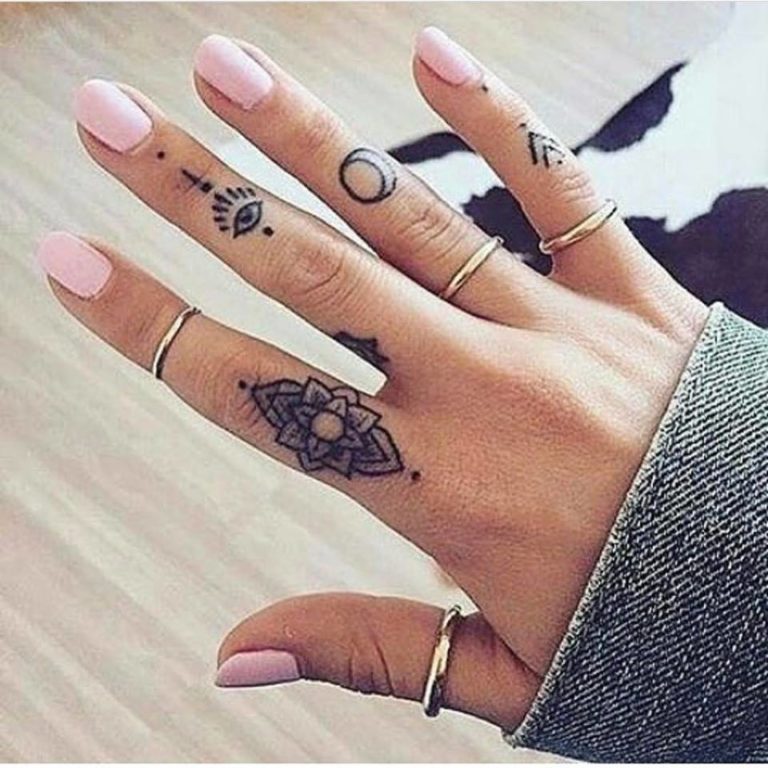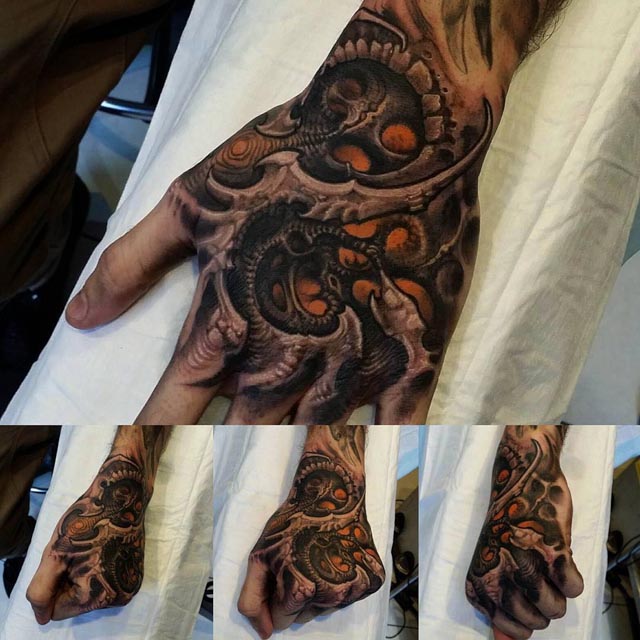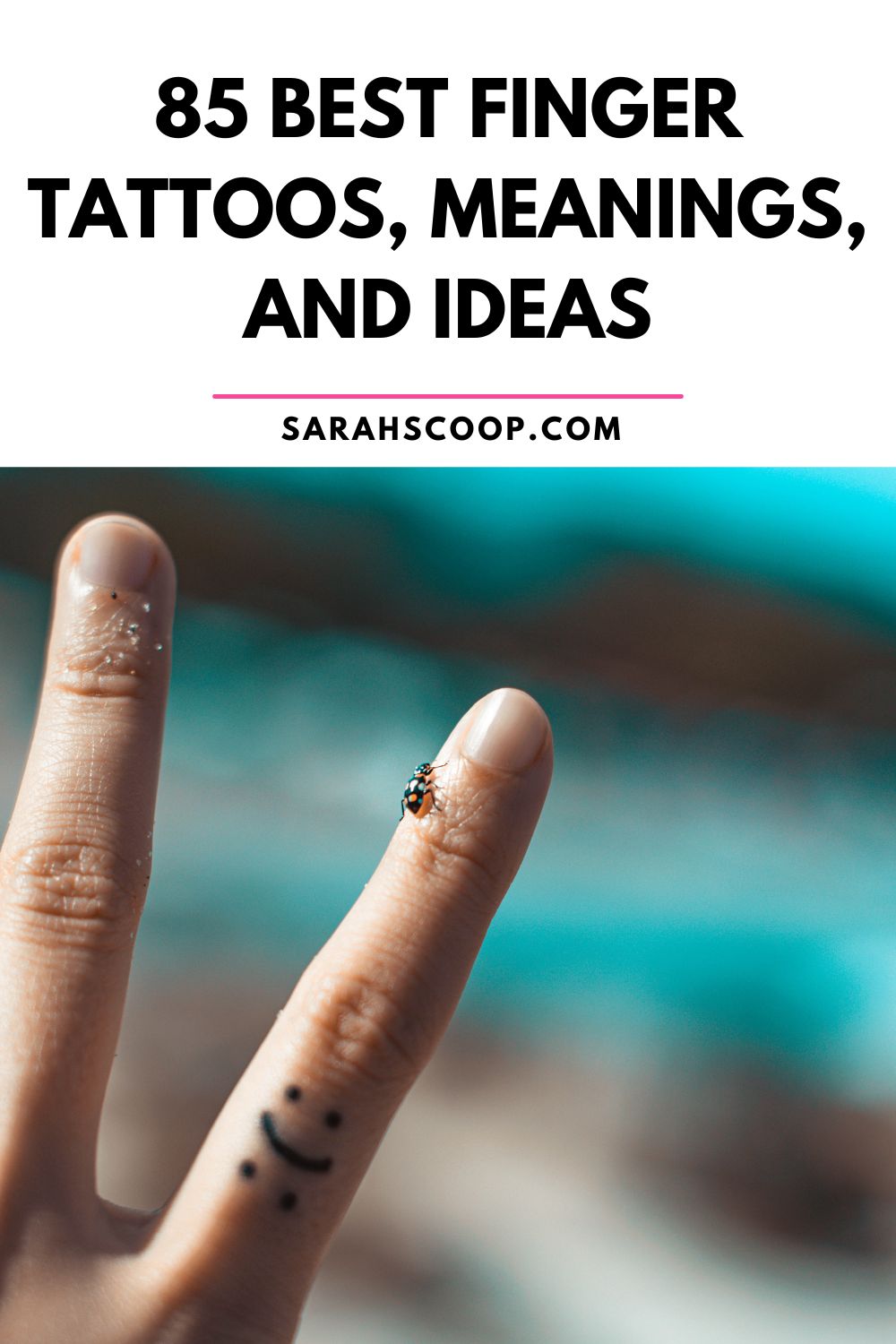
Finger Tattoos: Can You Get Tiny Ink Without the Touch-Up Blues?
Finger tattoos. They’re the rebellious whisper, the subtle statement, the tiny work of art that peeks out from beneath your rings. But before you dive headfirst into adorning your digits with delicate designs, a crucial question lingers: can you actually get a small finger tattoo that won’t fade into oblivion faster than your last New Year’s resolution?
Let’s unravel the mystery, separating tattoo fact from finger-tattoo fiction!
1. The Finger Tattoo Fickle Factor: Why Are They So Prone to Fading?
Okay, let’s be honest, fingers aren’t exactly the ideal canvas for long-lasting tattoos. They’re like the divas of the tattoo world, demanding extra attention and often throwing tantrums in the form of faded ink. Here’s why:
- Constant Motion & Friction: Your hands are workhorses. They’re constantly gripping, washing, typing, and generally enduring a daily barrage of friction. This relentless wear and tear acts like a tiny eraser, gradually scrubbing away at your precious ink.
- Thin Skin & Rapid Cell Turnover: The skin on your fingers is thinner than on other parts of your body, and it regenerates at a faster rate. This means that the ink has less to latch onto and is pushed out more quickly.
- Limited Fat & Muscle: Fingers lack the plumpness of other areas, providing less cushioning and support for the tattoo ink.
- Sun Exposure: We often forget to slather sunscreen on our hands, leaving our finger tattoos vulnerable to the sun’s harsh rays, which can accelerate fading.
2. Design Matters: Choosing a Finger Tattoo That Stands the Test of Time
So, are all finger tattoos doomed to a life of constant touch-ups? Not necessarily! The design you choose plays a significant role in its longevity.
- Simple is Key: Intricate designs with fine lines are more likely to blur and fade. Opt for bolder, simpler designs with clear, defined lines.
- Avoid Tiny Details: Microscopic details will inevitably bleed together over time, resulting in a muddy mess.
- Consider the Placement: The sides of your fingers tend to hold ink better than the inner surfaces or knuckles.
3. Ink Selection: Choosing the Right Pigment for the Job
Not all tattoo inks are created equal! Some pigments are more durable and resistant to fading than others.
- Black Ink is Your Friend: Black ink generally holds up better than lighter colors like white, pastels, or even some shades of red.
- High-Quality Ink is Essential: Don’t skimp on ink quality! A reputable tattoo artist will use high-quality pigments specifically formulated for longevity.
- Avoid Shading (Generally): While some shading might work, it can fade quicker than solid lines.
4. The Artist’s Expertise: Finding a Finger Tattoo Pro
This is where the magic truly happens. A skilled tattoo artist with experience in finger tattoos can make all the difference.
- Seek Out a Specialist: Look for an artist who has a portfolio showcasing successful finger tattoos.
- Discuss Your Concerns: Talk to the artist about your worries about fading and touch-ups. They can advise you on design and placement.
- Trust Their Guidance: Listen to their recommendations! They know what works and what doesn’t.
5. Placement Pitfalls: Where to Ink and Where to Avoid
As mentioned before, placement is crucial. Certain areas on your fingers are simply less hospitable to tattoos.
- Knuckles: Proceed with Caution: Knuckle tattoos are notorious for fading due to the constant bending and stretching of the skin.
- Inner Fingers: A Fading Frenzy: The skin on the inside of your fingers is thin and delicate, making it prone to ink rejection.
- Sides of Fingers: The Sweet Spot: The sides of your fingers tend to hold ink better, offering a slightly more stable canvas.
6. The Aftercare Ritual: Your Finger Tattoo’s Lifeline
Proper aftercare is paramount! Treat your new finger tattoo like the precious piece of art it is.
- Keep it Clean: Wash your hands gently with antibacterial soap and water several times a day.
- Moisturize Regularly: Apply a thin layer of fragrance-free moisturizer to keep the skin hydrated and prevent cracking.
- Avoid Harsh Chemicals: Minimize contact with harsh soaps, detergents, and cleaning products.
- Sun Protection is Key: Apply sunscreen to your hands whenever you’re outdoors.
7. Realistic Expectations: Embrace the Imperfection
Even with the best design, ink, artist, and aftercare, some fading is inevitable. It’s just the nature of finger tattoos.
- Prepare for Touch-Ups: Accept that you’ll likely need touch-ups eventually, even if you follow all the advice above.
- Don’t Expect Perfection: Finger tattoos are rarely flawless. Embrace the slight imperfections as part of their unique charm.
- Consider it a Commitment: Getting a finger tattoo is a long-term commitment that requires ongoing maintenance.
8. The "Hidden" Finger Tattoo: A Clever Alternative
Want a finger tattoo that’s a little more discreet and potentially less prone to fading? Consider a "hidden" finger tattoo.
- Inside the Finger: A small tattoo on the inside of your finger, visible only when you choose to show it, can be a fun and subtle option.
- Underneath the Finger: A tiny design on the underside of your finger, near the palm, is another hidden gem.
9. Lettering on Fingers: A Risky Business
Thinking of getting initials or a word tattooed on your fingers? Proceed with caution!
- Lettering Can Blur: Small lettering is particularly susceptible to blurring and fading.
- Choose a Bold Font: If you’re set on lettering, opt for a bold, simple font.
- Consider the Spacing: Ensure there’s enough space between the letters to prevent them from merging together.
10. The Pain Factor: Brace Yourself for the Sensation
Finger tattoos can be more painful than tattoos in other areas due to the thin skin and proximity to bone.
- Prepare for the Sting: Be prepared for a sharp, stinging sensation.
- Take Breaks if Needed: Don’t hesitate to ask your artist for breaks if the pain becomes too intense.
- Focus on Your Breathing: Deep, slow breaths can help you manage the pain.
11. The Cost of Finger Tattoos: More Than Just the Initial Price
Factor in the cost of potential touch-ups when budgeting for your finger tattoo.
- Touch-Ups Add Up: Remember that touch-ups will incur additional costs.
- Factor in Aftercare Products: Don’t forget to budget for aftercare products like antibacterial soap and moisturizer.
12. Temporary Finger Tattoos: A Commitment-Free Option
Not ready to commit to a permanent finger tattoo? Consider a temporary option!
- Henna Tattoos: Henna tattoos are a natural and temporary way to adorn your fingers with intricate designs.
- Temporary Tattoo Stickers: Temporary tattoo stickers are a fun and affordable way to experiment with different designs.
13. Healing Time: Patience is a Virtue
Finger tattoos typically heal within a few weeks, but the healing process can be more challenging than with tattoos in other areas.
- Be Patient: Allow your tattoo ample time to heal completely before engaging in activities that could irritate it.
- Avoid Picking or Scratching: Resist the urge to pick or scratch at your healing tattoo.
- Follow Your Artist’s Instructions: Adhere to your artist’s aftercare instructions diligently.
14. When to Say No: Recognizing the Risks
There are certain situations where getting a finger tattoo might not be the best idea.
- If You Have a Skin Condition: If you have eczema, psoriasis, or another skin condition on your fingers, consult with a dermatologist before getting a tattoo.
- If You Work in a High-Risk Environment: If your job involves frequent exposure to harsh chemicals or abrasive materials, a finger tattoo might not be practical.
15. The Final Verdict: Are Finger Tattoos Worth It?
Ultimately, the decision of whether or not to get a finger tattoo is a personal one. Weigh the pros and cons carefully, consider your lifestyle, and be prepared for the possibility of touch-ups. If you go in with realistic expectations and choose a skilled artist, you can increase your chances of getting a finger tattoo that you’ll love for years to come. Just remember, it’s a commitment!
Conclusion:
Finger tattoos, while undeniably stylish, come with their own set of unique challenges. They require careful consideration, meticulous planning, and a realistic understanding of their inherent limitations. While a completely touch-up-free finger tattoo might be a mythical creature, you can significantly increase your chances of having a long-lasting and beautiful piece of art on your finger by choosing a simple design, a skilled artist, and diligently following proper aftercare. Embrace the imperfections, be prepared for touch-ups, and enjoy the subtle statement your finger tattoo makes!
FAQs:
1. Will washing my hands frequently fade my finger tattoo faster?
Yes, frequent handwashing can contribute to fading, especially if you’re using harsh soaps. Opt for gentle, antibacterial soaps and moisturize your hands regularly to combat dryness.
2. Can I get a white ink tattoo on my finger?
While white ink tattoos are trendy, they are notoriously difficult to maintain on fingers. They tend to fade quickly and can sometimes turn yellow or gray over time. Black ink is a more reliable choice.
3. How often will I need to get my finger tattoo touched up?
The frequency of touch-ups varies depending on the design, placement, ink, and aftercare. Some people may need touch-ups every few months, while others can go a year or more between touch-ups.
4. What’s the best moisturizer for a finger tattoo?
Choose a fragrance-free, hypoallergenic moisturizer specifically designed for sensitive skin. Aquaphor, Eucerin, and CeraVe are all good options.
5. Can I get a finger tattoo removed if I regret it?
Yes, finger tattoos can be removed with laser tattoo removal, but it may require multiple sessions and can be more challenging than removing tattoos from other areas due to the thin skin.























